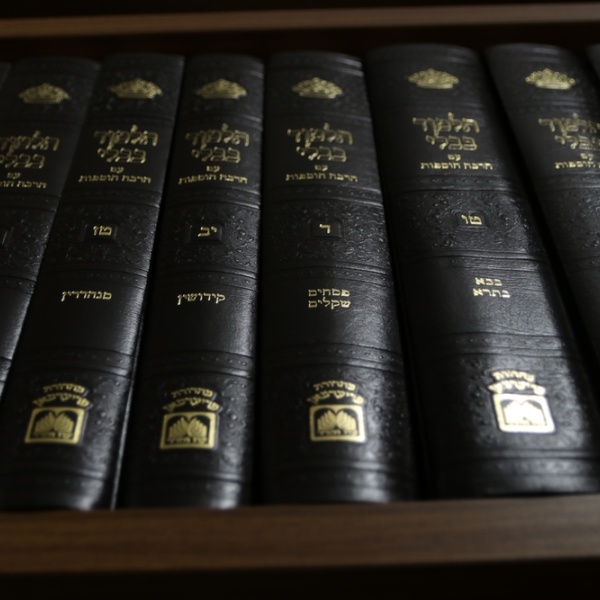
Most interesting is that many of these rules do not focus on trying to determine the ruling we should follow in the case at hand; rather, we apply what we might call "macro-halacha" rules that are then applied to the local discussion. So, regardless of the merits of a particular case, we (usually) follow the rulings of Beit Hillel in his disputes with Beit Shammai; Rava in his disputes with Abaye; and Rav in his disputes with Shmuel regarding ritual law, but the views of Shmuel when the dispute relates to monetary law.
Such an approach is viable only because both approaches are theoretically valid: "these and those are the words of the living G-d" (Eiruvin 13b). We are dealing not with right and wrong, but with right and more right. So while there might be merit in judging each case independently, Jewish jurisprudence opted to develop a series of general principles to decide the law[1].
Had we accepted in practice some of the alternate views, Jewish life might look very different. To cite some relatively minor examples (with major impact): the Sages rule that the morning shema must be said before daybreak, which means rising at about 4:30 a.m. in the summertime, something that would inconvenience many. "Luckily", we follow the view of Rabbi Yehoshua that the shema may be said up until ¼ of the day has passed (Brachot 9b). This ruling actually "violates" the general rule that yachid v'rabim halacha k'rabim, that we follow the majority view. Keeping with the kriat shema theme, had we followed the view of Beit Shammai, we would have to say the morning shema standing and the evening shema lying down--which is perhaps the plain meaning of b'shuchvecha u'vekumecha (Brachot 10b). Other views of Beit Shammai would involve much less inconvenience, but might appear a bit strange to us--like lighting eight Chanukah candles on the first night (Shabbat 21b), or saying thebracha on the wine at the conclusion of kiddush (Pesachim 114a).
Often--especially in the post-Talmudic period--there is no ready rule at hand, and poskim (halachic experts) can and will debate which view is to be followed in practice. Generally, over time, a consensus is reached and a certain view becomes the accepted one, while at other times different communities follow different rulings--the best known of these being differences between Sephardim and Askenazim.
Depending on the issue involved, the "stakes" can be very high, and accepting or rejecting a particular view can have enormous ramifications.
"One who remarries the woman he divorced [after her marriage and divorce from another], one who marries the one he did chalitzah to, and one who marries the relative of the one he did chalitzah to, he must divorce them, and any children [they may have had] are mamzerim; these are the words of Rabbi Akiva. The Sages say the child is not a mamzer" (Yevamot 44a).
Declaring someone a mamzer is a most serious matter. Whether such requires that one violate an issur mitah, a law that carries (in theory) the death penalty such as adultery, an issur karet, a biblical law that carries the penalty of excision, such as "marrying" one's aunt--or would apply to any regular prohibited marriage, such as akohen marrying a divorcee--is a most important debate. Despite the general ruling that the law follows Rabbi Akiva over his colleagues (Eiruvin 46b)--after all, he was the undisputed leading Rabbinic figure of his time--the Talmud is clear that the law follows the view of Rav Shimon Hateimani that a relationship involving karet is a prerequisite for declaring one a mamzer.
An even more crucial debate raged for much of the 20th century revolving around the status of civil marriage, or a couple living together who subsequently broke up. Without going into a detailed analysis, a simple reading of the Gemara leads one to the conclusion that such would be recognized as a valid Jewish wedding requiring a divorce--and such was the view of Rav Yosef Eliyahu Henkin[2]. All we can say is, thank G-d for the ruling of Rav Moshe Feinstein (Igrot Moshe, Even HaEzer 4:75) that such marriages may--if need be--ignored for the purposes of Jewish law. With the stroke of a pen, Rav Moshe saved literally hundreds of thousands of Jews from being declared mamzerim[3].
[1] Of course, many of these rules have exceptions built into them, such as following Abaye on the six cases of yal k'gam (Kiddushin 52b)--but that, too, is part of the rule.
[2] This Torah giant is less well-known and influential--in good part, I would argue, because he died in the early 1970s when America was, in many ways, a Torah wasteland. It was his younger colleague, Rav Moshe Feinstein, who became the most important Halachic figure to ever live on this side of the Atlantic.
[3] While I understand the value of a Jewish state promoting halachically valid weddings, I must say I have never understood why observant people insist that non-observant people have an Orthodox wedding against their will. Besides engendering much ill will against a religion that is being forced down their throats, it may inadvertently create mamzerim, as we cannot stop one who is married from living with others without the benefit of a get. By allowing civil marriage, we can save many from this terrible stigma. See Igrot Moshe, Even HaEzer 4:59, where Rav Moshe Feinstein advises that a non-observant couple should not have a halachically valid wedding.
